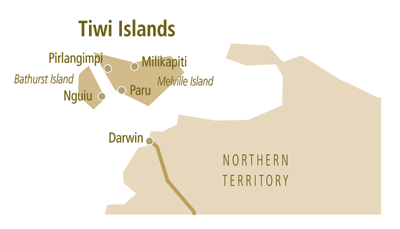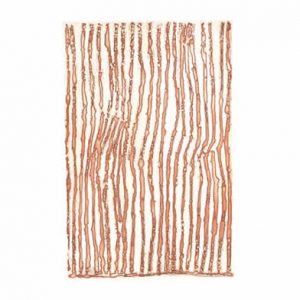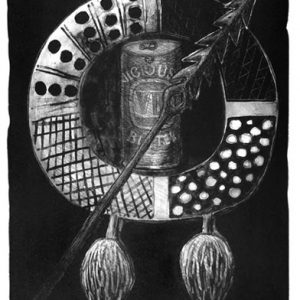“We People”
Tiwi literally means “we people”. During a period without outside contact that lasted for thousands of years, the Tiwi believed that they were the only people in the world. As a result of this isolation the Tiwi have developed a rich culture that is very distinctive from their mainland neighbours. The practices of bone pointing, singing to death and use of weapons such as boomerangs, shields and woomeras are not part of Tiwi culture. The Tiwi are famous for their double headed clubs, Pukamani poles (tutini) and intricately painted bark bags (tunga) that are used for Pukamani (funeral) ceremonies. The islands can be divided into 9 territorial groups that each control their own particular country, these clans control all hunting, food gathering and ceremonial law within their area. Each clan consist of a number of distinct skin groups that were developed during the Parlinari (creation period) when ancestral beings inhabited the islands. Due to various historical events these beings turned into the animal totems that they represented. For instance, the crocodile hunter turned into a crocodile after being chased by hunters into the sea, his wife the Broga women, (Tilardi) turned into the actual bird. Tiwi people are members of these various animal totems and at a social and spiritual level this clarifies relationships with other clan members. These totemic relationships strictly govern behaviour and social obligations, people without totem affiliation are considered non-persons and it is not unusual for outsiders whom are residing on the islands for a long period of time to be accepted via an assignment of a totem or skin group. Disputes between tribes are rare and mostly resolved through a native court, cases of adultery are considered most serious, and It is seen as acceptable for and adulterer to be wounded with a spear as retribution for their crime. Much of the Tiwi culture and social system is based upon stories surrounding the Pukamani burial ceremony, With no written language, the history and culture, story and law have been handed down from generation to generation via, song, story, totem design, sculpture and dance.




